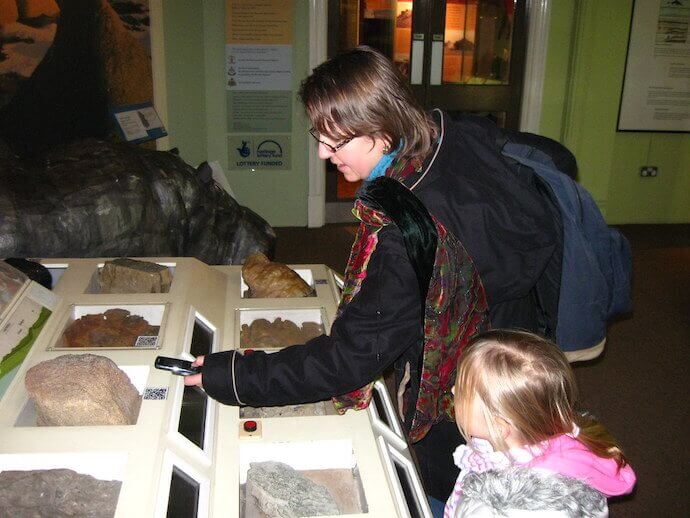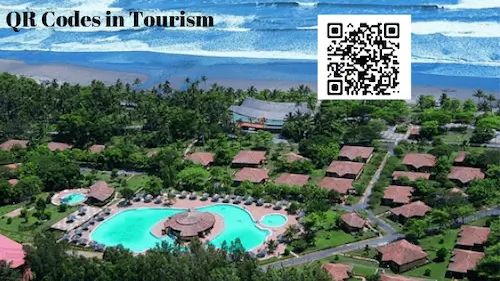The tourism Industry of a country represents the image of the nation to the people across the world. So the experience of tourists—local and foreign—should be a top priority for civic administrations.
City administrators can use information to resolve some of the challenges faced by tourists. If a tourist can receive relevant information at the right time and place, it can make their experience both easier and meaningful.
Many cities across the world are now using QR Code technology to disburse information to tourists. QR Codes are a global standard and most people recognize it. They may not understand the local language but they know how to scan a QR Code.
So, what to do to engage tourists and make their stay happy and convenient?
See how various stakeholders of the tourism industry—restaurants, hotels, transport departments, and civic administrations—are using QR Codes to improve tourist experience:
A. QR Code Use Cases to Engage Tourists—created one-by-one
In this section, we highlight use cases where low-volume QR Codes were generated for specific use cases.
1. QR Codes in Hotels
QR Codes are now being used in hotel brochures, access cards, feedback forms, elevator notices etc. This is a simple way to engage guests.
You can store your website URL, social media links, or may be just simple text. As users scan it via their smartphone, it will redirect them to the helpful information.
Here are a couple of examples:
a. Vancouver, Canada
Here QR Codes are actually used in welcome sweets!

The Westin Bayshore Hotel in Vancouver, Canada welcomes guests with a plate of customized cookies. One of the cookies has a QR Code on it. When guests scan it, they are prompted to a welcome message.
b. Paris, France
Best Western Hotel in Paris, France uses QR Codes to store information on all the services that the hotel provides. These are provided to the guests at the time of check-in.
Upon scanning, the guests are redirected to a service listed PDF file. Thus, guests do not have to bother themselves by calling the reception for information.
The hotel could have also printed this information in a guide. But if the hotel needs to update the list, it can use Dynamic QR Code. The updated QR Code remains the same and thus the hotel can save printing costs.
2. QR Codes in Restaurant Menu
QR Codes are used for multiple purposes in restaurants —for example, many restaurants give information on calories and nutrition intake of a particular food. Others may show recipe videos to prove the quality of their food.
Coupon QR Codes are also used by cafes to store coupon codes. The customer just needs to scan it to receive the code. And then avail the discount.
Many restaurants store their social media links in QR Codes. And paste it on coasters for visitors to scan and get access.
Here is an example:
a. United Kingdoms
Radisson Edwardian in UK is one of the most famous hotel chains in the country. And it massively makes use of QR Codes campaigns in its restaurants.
They use QR Codes in their menu to show videos of dish preparation. On scanning, the guest can see how their selected dish was prepared.
The guests, this way are fully acquainted with what they are actually eating.
3. QR Codes for Area Information
Cities across the globe are now using QR Codes to provide area information. You can find them in parks, bus stops, heritage sites, and even roads.
They help tourists in knowing the history, listening to some anecdotes, or say seeing some real war videos.
Here are some amazing use cases of QR Codes in tourism:
a. New York, United States Of America
In 2010, Central Park in United States celebrated World Abhor Day with a QR Code campaign. It was called the World Park campaign.

QR Codes were placed on various spots across the park. They stored the park’s website and social media links. Along with some interesting cultural facts.
Upon scanning, the tourists could access all the information.
b. Rio de Janeiro, Brazil
As part of FIFA 2014 mania in Brazil, QR Codes were used extensively to provide information to tourists.

Tourists could see QR Codes on almost every street in Brazil. Upon scanning they got instant access to the history and culture of the city.
How to create QR Codes for specific use cases?
Now let’s come to the actual question—how to create such QR Codes.
For all the use cases just mentioned, you would need a limited amount of QR Codes. Thus, you can create QR Codes manually.
For this, you will need a best QR Code generator tool. There are many online QR Code generator tools available. Select the QR Code generator that will suit your purpose best.
In this article, we will use Scanova for demo purposes.
You just have to follow some simple steps:
1. Sign-up for a 14-day free trial
2. Select the required QR Code category that suits you best.
3. Add the required data. Then Save your QR Code.
4. You can choose to customize your QR Code. There are three QR Code designs on the screen—plain black-and-white, custom with logo, and custom with background. Proceed with either of the options
If your use case is marketing, you must choose the custom design option. Why? Because customized QR Codes act as point-of-engagement and attract more scans than the standard ones.
5. Click Update and proceed to Download it
6. Specify the image size and format and click Export
B. QR Code Use Cases to Engage Tourists—created in bulk
1. QR Codes in Museums
Museums are meant to muse, right? And they are one of the most sought after tourist spots.

Many museum exhibitors are already using QR Codes for multiple purposes.
They use it to store images, show videos, or to give presentations. Some of them also use QR Codes to provide guidelines and instructions.
The best part of QR Codes is that they contain web content. The content can be customized to ensure that visitors see the content in the language of their choice.
`
And by using Dynamic QR Codes, museum exhibitors can update the information when needed. The updated QR Code will remain the same and this way they can save printing cost.
See examples of how museums are making visitor experience better:
a. Scotland
The National Museum of Scotland uses QR Codes to tell a ‘tale of things’. They are placed on around 80 objects and link to the museum’s website.
On scanning, the visitors can access audio clips, video files, images, and other fun facts about the artefact.
b. Cleveland, Ohio
The Cleveland Museum of Art takes its visitors on a QR Code audio tour. It tells them about the Egyptian, Greek, and Roman art. Besides, it also relays information on medieval drawing and paintings.
Users just need to scan the QR Code to enjoy the tour better.
2. QR Codes in gift products
Souvenir is generally seen as a reminder of places tourists have been to. Tourists love taking what they see while visiting places.
And QR Codes on gifts make the product more interesting. Many product designers add music notes or enchanting videos in QR Codes. And paste the QR Codes on products.
And here are a couple of use cases:
a. United States Of America
J.C. Penney—a departmental store in the United States runs QR Code campaigns on special occasions. For example, in 2011, on Christmas, they provided QR Codes promotion in many of their stores.
They use QR Codes gift tags to engage customers. Here, their customers can encode any message they want to relay to the receiver of the gift.
The receiver can then listen to the recorded message upon scanning.
How to create QR Codes in bulk?
For the above examples, you need QR Codes in bulk. Creating them manually one-by-one is not really practical.
Again as you decide to create a QR Code, search for an online tool. But select the one that has bulk feature.
In this article, we will use QR Batch for demo purposes. Here are some easy steps to follow:
1. Create a spreadsheet of the information to be encoded in the QR Codes
Note that the first column ought to be ‘Filename’ while second column onwards, data varies according to the type of QR Codes you create. Here’s how you can create the spreadsheet.
2. Download the spreadsheet in any format— CSV, XLS, or XLSX
3. Sign in to QR Batch and select the category of batch that suits you (website URL, serial code, vcard, or simple text)
4. Upload the spreadsheet
5. Review the data
6. Add a design to QR Code batch (you can add your company’s logo and colors to customize your QR Code)
7. Make payment
8. Download your batch of QR Codes
To know the in depth process to create QR Codes in bulk, refer to this detailed guide.
Most tourists have a smartphone in their hands now. Hence, stakeholders in the industry can treat this as a huge opportunity to improve the experience of tourists.
As seen from the examples above, many hotels, restaurants, and museums have started using QR Code technology to differentiate themselves.
Don’t want to become irrelevant soon? Start engaging tourists soon. And start creating with QR Codes.
